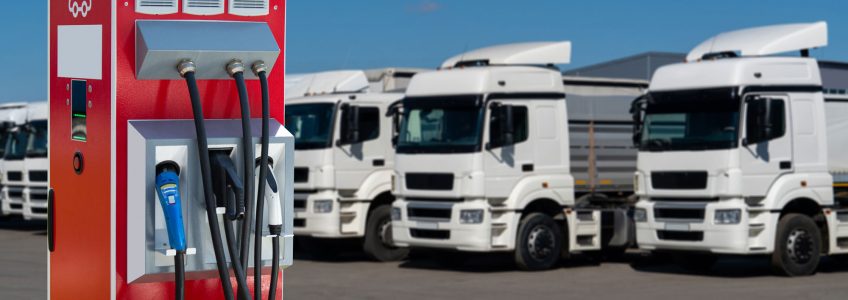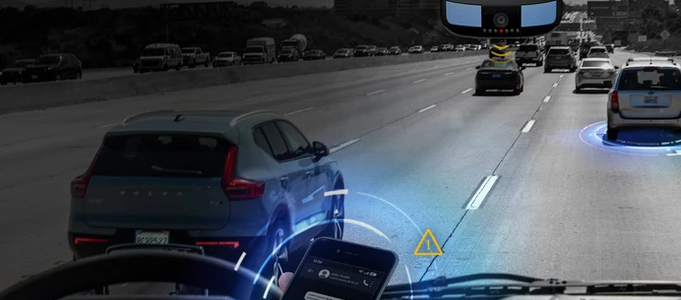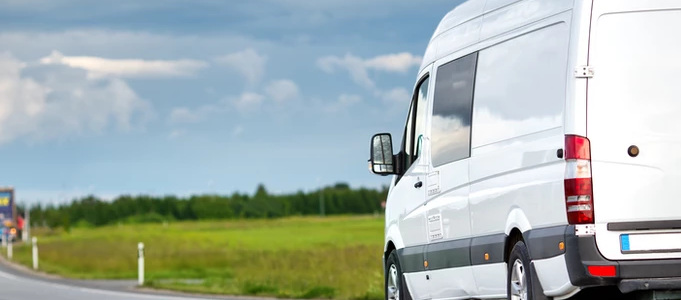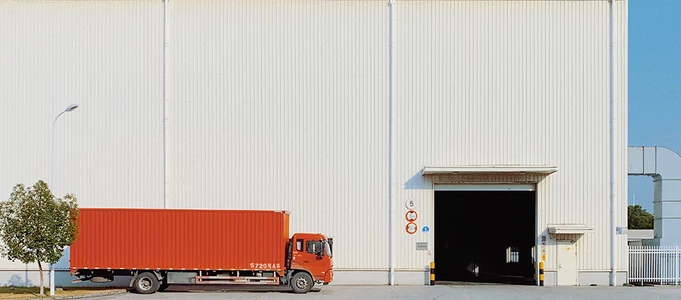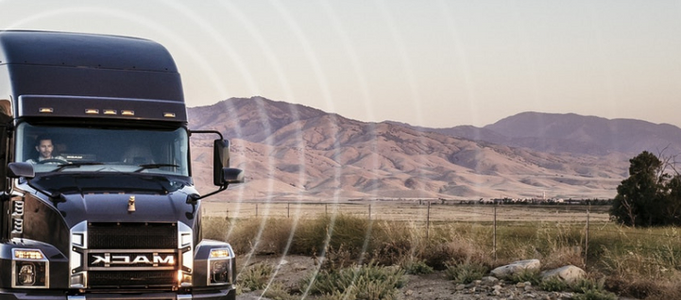Five Electric Commercial Truck Companies We are Keeping an Eye on in 2021
A number of startups and automotive giants have been busily working to electrify delivery and distribution trucks in the coming years: all-electric heavy-duty big rigs, semi-trucks, box trucks, delivery vans and more. While the major obstacles facing the electrification of the automotive industry are ones of scale, price points, battery technology, and charging station accessibility, advancements expected over the next 10 years will lead to more electric vehicles driving alongside or even replacing the diesel- and gas-powered trucks and vans that America relies on to carry goods (and people) across the country.
Here are five major players we are keeping an eye on in 2021.
BYD
Unlike other companies looking to disrupt the long-haul trucking industry, BYD is eyeing the short-haul goods movement sector, primarily in America’s ports, rail yards and freight-handling facilities. In 2020, it rolled out more of its battery-electric trucks to customers across the United States.
BYD’s Class 8 Day Cab has a range of 125 miles and a top speed of 65 miles per hour. The truck’s battery packs can recharge in as little as two hours with a high-speed direct current system or about 14 hours with a standard 240-volt charging system.
The company’s trucking division says its medium- and heavy-duty electric trucks are making up an increasing part of the company’s U.S. operations.
Chanje
One company aiming to electrify the package delivery industry is a Los Angeles-based, Chinese-backed startup called Chanje.
The company’s nearly 30-foot long V8100 electric medium-duty panel van can carry a 3-ton payload. What’s more, the van’s lithium-ion battery pack holds enough charge for a 150-mile range. According to the company, that’s more than double the number of miles the majority of commercial delivery vans drive in a day.
Daimler Trucks
In 2018, German automaker Daimler, the largest truck maker in the world, announced its all-electric 18-wheeler: the Freightliner eCascadia.
The big rig has a 250-mile range and was designed for regional transportation and port service. Daimler’s other all-electric model, the Freightliner eM2 106, has a 230-mile range and is intended for more local distribution and deliveries. Both the eCascadia and eM2 are currently planned to enter series production in late 2021. The company also has an all-electric box truck (for urban deliveries) and a school bus in the pipeline.
Nikola Motors
Few are likely to be familiar with the Phoenix-based startup that got the naming rights to Tesla’s first name. However, over the past five years, Nikola Motor Co. has slowly but surely emerged as a pioneer in this space.
The company has created the Nikola Two and the Nikola Tre for both European and North American markets. Each semi-truck is available with hydrogen fuel cell electric capabilities and their anticipated ranges are between 250 and 750 miles.
Lion
While the medium and urban truck markets are already getting attention from multiple truck manufacturers and a few startups, in the uncrowded school bus market there are only Lion Electric, Blue Bird, IC Bus, a division of Navistar, and Thomas Built, the division of Daimler Trucks/Freightliner.
Lion Electric has been around since 2008 and currently has an annual capacity to produce 2,500 trucks and buses per year. In addition to school buses, Lion Electric manufactures medium box and urban trucks, and specialty trucks such as garbage haulers. The usage profile for these trucks usually involves lower mileage per day and periods of overnight storage, lending themselves to excellent opportunities for electrification. Amazon is onboard with the opportunity to buy 2,500 Lion urban trucks and to potentially own 20% of the company.
For those considering converting all or part of their fleets to EVs, Advantage Asset Tracking has your entire fleet solutions roadmap covered backed by the worlds leading telematics provider, Geotab.
Our knowledgeable team will guide you through the entire selection process to ensure you make the right choice for your business!
Geotab announces release of upgraded GO9+ telematics device
GO9+ adds high-speed wireless to its flagship telematics solution to support fleet operations and burgeoning consumer connectivity. The new GO9+ is built upon Geotab’s GO9 device. Released in 2019, this device was designed to help businesses better manage their fleets through improved acceleration tracking, a more accurate GPS and better support for vehicle-generated data and for new vehicle types.
The newly added connectivity of GO9+ will allow businesses full visibility of their vehicles in real-time, as well as offering Wi-Fi connectivity for up to four hours with the ignition off, thereby eliminating wasted fuel and greenhouse gas generated when idling for WiFi access.
The GO9+ is ideal for fleets and vehicles of all classes and duties, including heavy truck fleets, rideshare vehicles, small business fleets, ride-for-hire services, buses and even for use as a single-vehicle mobile office. As with all Geotab devices, it is supported by the MyGeotab platform, which provides managers with centralized access to all connected vehicle data.
Just as the GO9+ is an essential tool for any business operating with vehicles in the field, with the addition of Wi-Fi, GO9+ saves cost by reducing the number of cellular connections in the field while improving access to data options for employees.
-
Field workers can safely receive work orders, email and other correspondence while in the field — without the need to leave their vehicles
-
Ideal solution for ride sharing, buses and limousines to give customers the ability to stream music, work on a project or connect with others effortlessly while they ride to their destination
-
Continuous Wi-Fi signal for up to four hours even when the vehicle is off
-
Long-haul drivers can take advantage of high-speed wireless connectivity while in their truck cabs off hours — without the need to tap personal cellular data plans
-
Ideal for fleets that need to upgrade their devices in advance of the 3G shutdown and subsequent device migration coming in 2022
Here’s Geotab’s CEO, Neil Cawse discussing how the GO9 platform is paving the way for future GO devices.
The GO9+ will first be available in the United States. The telematics solution is expected to roll out in other regions in 2021. For more information on GO9+, visit: https://www.advtracking.net/vehicle-tracking
5 Challenges and Solutions Facing Winter Road Works
Winter operations can be challenging for existing and new businesses. If a company does not understand or prepare for the level of compliance required for winter work, it can only make matters worse. Being caught unprepared in this area can disappoint customers and lead to a number of other problems.
Here are five common issues that arise when managing winter road compliance and ways to solve them:
Challenge 1: Managing busy shifts
Nature is rarely accommodating. Snow and ice can appear overnight, causing dramatic shifts in workloads. Being able to manage your employees under changing or surprising weather conditions is an important part of running winter operations.
Solution: Operation managers are responsible for tracking their organization’s workload, so stay organized! Many companies use spreadsheets or software to track serviced and unserviced areas and efficiently dispatch employees. Organization is key because it allows a business to fulfill service obligations in an efficient manner.
Challange 2: Hitting contract targets
Most municipalities have specific standards for winter maintenance and reflect those standards in service level agreements. For example, the City of Ottawa in Canada allows four hours for clearing after the end. Maintenance crews are given 16 hours to clear residential roads and lanes.
Solution: Just like managing busy shifts, businesses need to stay organized in order to hit their contractual obligations.
Challenge 3: Choosing the right equipment
Even the most organized winter maintenance operation can’t finish the job without the right tools and vehicles to support their workers. One of the biggest mistakes businesses make is underspending and leaving themselves open to failure when the unexpected happens. A truck might break during a job but you still have to honour your customer agreements.
Solution: Prepare in advance by investing in back-ups and spares. Keeping vehicles up-to-date on maintenance and fuel is also essential. After all, prevention is the best cure.
Challenge 4: Top-of-the-line customer service
Don’t keep customers in the dark. Keep the expectations of customers and clients in mind at all times.
Solution: Do research and be aware of the different ways your company can connect to customers and keep them informed about project statuses. Twitter updates or online portals are two small ways to keep the public informed of your work to let them know when the roadways are safe and clear.
Challenge 5: Maintaining accurate records
Accurate record keeping eases many logistical challenges and also helps mitigate liability risks. Companies engaged in winter maintenance are especially vulnerable to litigation due to contracted terms, compliance issues and the slip-and-fall hazards present on job sites.
Solution: Successful winter maintenance businesses keep a spreadsheet or use software to record all of their jobs. Recording elements like job time, employee responsibilities, vehicle locations and salt dispensed can ensure any issues can be quickly resolved with timely and accurate information. Records also provide an important back up if needed.
This 2021 winter businesses wield great revenue-generating power but in order to justify that power, they must take responsibility to overcome common winter compliance issues. Always remember, the most important part of any business is always working hard and staying true and honest to your employees and clients.
For more details on ways Advantage Asset Tracking builds and manages integration and application development for fleet and field service companies contact us at info@advtracking.net
What Awaits the Fleet Technology Industry in 2021
If you are like most people, as this unprecedented year comes to a close, you may be wondering “what awaits in 2021?”. Perhaps you are hoping for a sudden end to the pandemic or you are anticipating that a change in our country’s leadership will inspire a new wave of communal unification.
Given the impacts felt by COVID-19 and everything else that happened in 2020, fleets across industries are equally asking themselves hard questions as most were forced this year to navigate uncertainty and swiftly adapt to new ways of operating. This has led many to invest in fleet technology.
A recent industry study found that there was an increase of 8% in the number of fleets using GPS fleet tracking technology (from 64% in 2019 to 72% in 2020). An impressive 96% of fleets that used GPS fleet tracking software found it to be beneficial. Furthermore, 32% reported a positive return on investment (ROI) in just six months of implementing fleet tracking technology. Of all the technologies implemented by the survey respondents, in-cab video, with both front-facing and driver facing cameras, rose to the top.
As in many industries, economic and regulatory uncertainty adversely impacted fleet businesses with 44% reporting that increasing costs were a primary challenge to their daily fleet operations. That said, GPS fleet tracking had a positive effect in reversing this trend with an average of 8% seeing a decrease in fuel costs, 11% a reduction in accident costs and 10% decrease in labor costs.
Based on these finding and some of our own observations working with fleet managers in the transportation, services, government and construction businesses, here are the trends we are seeing for 2021:
-
Fleet managers will feel the pressure to manage or reduce costs which will lead them to implement a fleet management software that closely tracks comprehensive cost information throughout each vehicle’s life cycle and provides access to data that will help make smarter budget-driven decisions.
-
The power of data in business today is inescapable. This is especially true for companies reliant on fleet vehicles. With the right analytic tools, managers will be increasingly leaning on data to help generate customized reports that monitor progress, gauge performance, and help make intelligent business decisions.
-
A trend on the rise throughout the fleet industry is the use of tracking systems and telematics. As U.S. safety regulations mandate fleet tracking using electronic logging devices (ELDs), these are becoming compulsory for demonstrating compliance with rules that govern operators’ on-hours and required rest periods. Onboard telematics systems come standard in many vehicles today as fleet tracking continues to advance into 2021.
-
Budgets will be stretched in 2021 so managers will be turning to data collection and analysis to get more from their total fleet budget. Life cycle cost is a fleet maintenance metric to monitor. But as fleet vehicles become ever more specialized in 2021, more managers will be paying attention to secondary operational costs. Repairs and maintenance incur the highest costs, but smaller costs, such as idle time or inefficient routes, add up, too. Data obtained from an EAM platform will likely show where small operational changes can lead to significant savings.
-
Operators will be checking their PM balance more often in the new year. While there’s no perfect ratio of preventive vs. reactive maintenance, operators can always aim for the most uptime. Using software with advanced analytic capabilities makes it easier to monitor and assess the ideal PM ratio, especially as fleets change over time.
There is no telling what’s to come as many of the events of 2020 will continue to be felt into the new year. To ensure that fleet-reliant businesses continue to operate optimally and actually thrive in 2021, investing in fleet technology will be a secure way for them to protect themselves against an uncertain future.
Electric Truck Fleets are Slated to Increase in 2021
Like almost every industry, the fleet companies have been greatly impacted by the 2020 pandemic. Delivery fleets in particular have scrambled to keep up with increased demand from online shopping. Increased e-commerce activity combined with a renewed focus on health and the environment has accelerated electric fleet pilots across industries.
With the transportation sector contributing nearly a third of the GHG emissions in the U.S., fleets are under increased pressure to do their part to reduce emissions. Fortunately for fleet managers, the benefits of electric vehicles extend well beyond the environment.
Companies with large delivery fleets are moving forward with electric fleets creating what is estimated to be a large shift to take place in 2021 and beyond. In 2019, Amazon ordered 100,000 delivery vans from EV startup Rivian with the hopes others will follow suit. UPS and FedEx are turning their sights towards electric as well. FedEx stated it already has the ability to go electric with the vast majority of its worldwide fleet. And because EVs last longer and have lower fuel and maintenance costs, the total cost of ownership is a winner for fleets.
One obstacle to electrification fleet managers have cited is a lack of available vehicles for their individual use cases. As the larger fleets continue to scale their operations, availability is becoming less of an issue—especially in the light and medium-duty truck sectors. As the demand for electric options grows, manufacturers will continue to ramp up the development and production of their offerings. Expansions into semi-trucks and transit buses are already being seen with California and New York City on track to achieve goals of 100% zero-emission bus fleets by 2040.
When it comes to driving the adoption of electric vehicles, we know that consumer choice plays a major role. With pickup trucks making up a large portion of commercial and consumer demand, it seems like a no brainer to offer more electric pickup options. Pickup trucks so far this year have accounted for one out of every five new light-vehicle sales, according to data compiled by Trucks.com.
Electric-only manufacturers Rivian and Tesla are poised to release much anticipated options, as well as traditional automakers such as GM and Ford. Both are coming out with an electric version of popular models such as GM’s Hummer and Ford’s F-150 sometime within the next two years. And for light commercial vehicle users, they do not need to wait long as Ford’s E-Transit cargo van is slated to come out next year, offering great news to last-mile delivery providers.
Two Last Mile Delivery Trends Affecting The Fleet Management Industry
The ongoing COVID-19 pandemic has greatly shifted our economy, making it more homebound and heavily reliant on e-commerce. The growing demand for e-commerce and rising consumer expectations have placed additional pressure on retailers to effectively and efficiently expedite delivery without increasing costs. This has brought renewed attention to order fulfillment, especially last mile delivery.
Last mile delivery, also known as final mile delivery or final mile logistics, refers to the transportation of goods from a warehouse or distribution center to their final destination, which is usually the customer’s doorstep. Retailers have been forced to look at efficiencies through the entire delivery process and many are looking at how to best manage the use of their transportation fleets. Below are two trends we are closely following:
Insourcing Deliveries
Some retailers have opted to handle last mile deliveries internally, relying on their own fleet of vehicles or a hybrid fleet to fulfill orders, instead of outsourcing. While outsourcing, by all means, is still more commonly used, some retailers are looking into alternate options such as co-oping with competitors in their region to share assets and reduce final mile logistics costs. This trend has inspired some 3PL providers to develop their own local delivery services to compete with insourcing, with vehicles and technicians on-hand for local deliveries.
Hybrid Fleet Management Systems
The hybrid fleet model, a combination of a trucking company’ own fleet, paired with contractors, third-party providers and freelance drivers, is gaining popularity as it helps to scale fleet size in accordance with changes in demand. A hybrid fleet model offers greater flexibility and affordability than the traditional model. If aligned correctly with your fleet operator, there are even more opportunities to create value-added synergies within your supply chain, including optimizing deliveries within your entire network, mitigating deadhead miles with empty trucks and even introducing the potential to broker your truck capacity in certain lanes.
A hybrid fleet strategy requires a fleet management system capable of enabling efficient transportation execution. Similar to traditional fleet management systems, which enable businesses to gain insight and analytics into vehicle and technician performance, a hybrid fleet management system provides you with a centralized dashboard from which you can optimize routing, monitor vehicle location, receive delivery updates and weather alerts, access historical reports and more, all in real time. With a hybrid fleet management system, you get the best of both worlds in terms of both scalability and control, making it one of the leading trends for last mile delivery today.
Advantage Asset Tracking helps businesses with fleets of all sizes to navigate the complex world of fleet management and personal safety solutions. Serving the role of both consultant and guide, Advantage walks fleet managers step-by-step through the entire technology roadmap so that you can identify the most creative , yet economical solution for managing their hybrid fleets.
What is a Connected Car?
Connected cars have opened up a world of possibilities for enhancing vehicle performance. The most game-changing smart device in recent years isn’t a phone or a smart watch… we believe it’s your car. All over the world, businesses, governments and individuals are equipping their vehicles with internet connection, while the top auto manufacturers are embedding telematics devices in their newest models.
What does the buzz word “connected car” actually mean?
A connected car is a vehicle that is equipped with mobile technology, and therefore “connected” via the internet. Telematics is also used to connect cars, by means of a small device that plugs into the vehicle, or through embedded technology. The telematics device acts as an Internet of Things (IoT) hub which sends vehicle data to a cloud service, where it can be processed and accessed by the vehicle owner or fleet manager.
Types of connectivity in cars
Connected car capabilities can be grouped into several categories:
-
Telematics: tracking vehicle location and activity, driver behavior, engine diagnostics. Organizations can gain visibility over a large fleet’s performance from a single online platform.
-
Vehicle-to-everything (V2X): interacting with any object in the vehicle’s vicinity. This communication could be vehicle-to-vehicle (V2V), vehicle-to-pedestrian (V2P), vehicle-to-network (V2N), or vehicle-to-infrastructure (V2I).
-
In-vehicle infotainment: interacting with vehicle occupants. This includes audio and video entertainment as well as navigation systems.
What’s the difference between connected cars and autonomous vehicles?
A connected car refers to internet connectivity, while an autonomous vehicle controls its own movement, without driver intervention. A fully automated vehicle or self-driving vehicle with artificial intelligence (AI) needs no driver input in order to navigate to its destination (which McKinsey refers to as “virtual chauffeur”).
Highly automated vehicles still need years of testing before they can become widely available for public use. Today, however, many drivers can benefit from connectivity and basic automation for support with maneuvers like parallel parking or adaptive cruise control.
5G will speed up connected car benefits
The introduction of 5G — the fifth generation of wireless technology — promises to improve the speed and reliability of mobile internet connection. At its peak, 5G operates 100 times faster than 4G and has extremely low latency. This means 5G devices can download and send vast amounts of data in a fraction of the time it would take using 4G.
5G is expected to grow the market for the ever-increasing number of tools, whether smartphones or thermostats, that rely on stable internet connection. One such tool, a connected car, generates millions of data points each day, which can be transferred faster than ever using 5G. Real-time tracking will become even more accurate, improving solutions like Advanced Driver Assistance Systems which help drivers avoid collision hazards.
OEM telematics
A trend is emerging among leading vehicle manufacturers — or Original Equipment Manufacturers (OEMs) — to embed telematics devices directly into new vehicle models. Embedded devices are capable of processing OEM-specific vehicle information and telematics data once the consumer has given consent to the manufacturer. This data can then be integrated with an online fleet management platform that standardizes the user experience, enabling owners of fleets with a variety of vehicle and connectivity types to see all vehicle information in one place.
Here are a few ways fleets can benefit from connected vehicle technology:
1. Productivity: Track factors that influence fleet productivity, such as idling time, driving time, customer visits or ignition locations.
2. Safety: Detect risky driving behavior such as harsh braking, speeding or sharp cornering. Set up driver coaching and advanced driver assistance, or install dash-cam solutions to gain visibility into on-road activity.
3. Maintenance: Access vehicle health data. Use a connected fleet management platform to set up predictive maintenance to minimize the risk of unexpected, and potentially dangerous, vehicle failure.
4. Sustainability: Get precise data on fuel usage and inefficient activities like idling. Fleets made up of EVs, or a mix of EVs and conventional vehicles, can monitor charge levels, range and battery degradation.
How connected vehicle technology is changing the fleet industry
Today’s asset tracking capabilities go far beyond providing location information. Connected fleet managers can easily view and monitor variables like driver behavior, fuel usage, harsh events and engine health. This information can be used to construct comprehensive plans for improving fleet safety, productivity, sustainability and more. To schedule a consultation please contact us at info@advtracking.net
Get the Facts on Distracted Driving: Common Causes and Solutions
Distracted driving is plaguing our fleets and fleet owners are looking for answers. According to the National Highway Traffic Safety Administration (NHTSA), distracted drivers on U.S. roads killed 3,166 people in 2017 alone. Due to the widespread use of smartphones, distracted driving has become an epidemic. In this blog post, we have compiled some distracted driving facts to encourage all drivers to eliminate risky behavior.
What’s considered distracted driving?
Distractions can come from many sources, above and beyond mobile phones. Any activity that takes your attention away from driving, even for a second, is considered distracted driving. To put things into perspective, if you do any of the following behind the wheel you are considered a distracted driver:
-
Eat or drink
-
Talk with people in your car or on the phone (even hands-free)
-
Text, scroll or search on your phone
-
Apply makeup
-
Play with the radio or navigation system
-
Smoke or vape
-
Reach for something on the floor
-
Look at maps or read directions
There are four types of distracted driving:
-
Manual: Taking your hands off the wheel
-
Visual: Taking your eyes off the road
-
Cognitive/Mental: Thinking about something else while driving
-
Auditory: Being distracted by noise from a ringing phone or conversation (mobile or in-person)
Let’s get down to a few statistics
The statistics associated with distracted driving are shocking, but apparently not shocking enough to convince drivers to put their phones down.
-
You are 4 times more likely to crash when using a cell phone while driving.
-
When you send or read a text, you take your eyes off the road for approximately 5 seconds.
-
The average speed in the U.S. is 55 mph (88.5 km/h), which means taking your eyes off the road for 5 seconds is equivalent to driving with your eyes closed for the entire length of a football field.
-
According to the Government of Ontario, one person is injured in a distracted driving-related incident every half hour.
-
In Ontario, deaths from collisions caused by distracted driving have doubled since 2000.
-
In the USA, during the day, 481,000 drivers are using cell phones or other electronic devices at any one time.
-
Each year, distracted driving is a factor in 4 million motor vehicle crashes in North America, according to the RCMP.
Texting and driving
Texting and driving is incredibly dangerous, and yet so prevalent. A poll conducted by the Canadian Automobile Association (CAA) in November 2017 found that more than 80% of the country’s population believes texting and driving is more problematic than it was three years earlier, despite the increase in public education and regulations. With 96% of respondents claiming texting and driving is a threat to their safety on the road, the poll found that this concern is now tied with drunk driving as the top road safety concern amongst Canadians.
Employer liability
According to the National Safety Council (NSC), an employer may be held legally accountable for the actions of a negligent employee if the employee is on duty at the time of a collision. This is called vicarious responsibility and employers are being held liable up to $25 millionfor employee crashes. Not to mention, the costs of these accidents alone are astounding. The average collision cost per vehicle annually is $4,000 to $8,000. These figures could devastate your bottom line as a business owner.
Distracted driving technology solutions
Some fleet owners have implemented their own distracted driving programs, however this depends upon driver compliance. Early programs have relied upon agreements and written policies to guard against the use of cell phones in the vehicle. Without question, technology can support companies in their effort to reduce distracted driving.
Cameras are an effective way of curbing distracted driving. Fleet managers can review in-cabin video footage and perform random audits to ensure their drivers are following procedure. These tactics, coupled with Geotab telematics, allow fleet managers to quickly alert drivers against the same event in the video to identify exactly what was happening at a specific moment.
Other tools incorporate automated driver coaching. Predictive Coach Add-In, for example, identifies poor driver behavior based on data from the Geotab GO device, then automatically assigns relevant training to the specific driver while documenting the corrective action for management. Predictive Coach monitors risky behavior such as speeding, hard braking, rapid acceleration and lack of seat belt use – all signs of distracted driving.
Another tool that helps drivers improve their driving habits is the D2Go Driver Challenge, which offers an exciting new way to engage, motivate and coach drivers. This solution turns driving into a friendly competition. Using gamification, D2Go scores drivers and compares them on selected key performance areas. Trends are tracked and analyzed to give both drivers and managers insight on who needs improvement, and who deserves recognition.
When your focus leaves the road, things happen quickly.
Distracted driving has devastating and irreversible consequences. While tools are available to improve the problem, nothing will make an impact unless drivers alter their mindset and eliminate risky behavior.
Drivers must pledge to end distracted driving and incorporate strategies into their daily lives to combat the issue. You cannot drive safely unless 100% of your attention is on driving.
How is your fleet combating distracted driving? Let us know.
Share your story with us on social media and mention @advtracking
Four Best Practices For Fleet Safety Leaders
Fleet safety management is about establishing and nurturing a culture of safety, which involves implementing and sustaining best practices across the entire fleet operation.
By deploying a comprehensive driver safety program, a fleet safety manager or company safety administrator can achieve their primary goal of creating and overseeing a safe driver culture where best practices become second nature to employees when they are behind the wheel. Here are four best practices to consider to help achieve this goal.
1. Establishing a foundation
-
Build support — Developing a driver safety program starts with recognizing the potential challenges from the start and addressing them. Make sure you have support from senior management, while also gaining acceptance from employees and enforcing policy consistently.
-
Learn from leaders — Studying use cases from other companies that have successfully rolled out safe driving policies and fleet risk management solutions provides a great opportunity to learn. Do your research and see what may work best for your organization.
-
Assemble the team — Forming a core team from across the various areas of the company (marketing, human resources and operations) will help bring experience and different points of views.
2. Coordinating resources
-
Within your workplace — Safe driving courses and practical in-vehicle evaluations are important elements of fleet driver safety training. Offering these from within the organization shows employees that fleet safety is a core commitment of your organization. This also helps emphasize what is at stake, which includes not only each individual’s safety, but also the entire company’s brand reputation, the ability to serve customers and legal liability which brings economic risk to the business and its employees.
-
On-the-road — Practical evaluations of drivers skills should be a consistent part of the overall program. Consider providing your drivers with training annually.
3. Layering in technology
-
Know your options — Driver safety solutions can make an important contribution to fleet operations. A fleet safety leader must be knowledgeable about the latest technology in order to tap into the benefits. The best way to do this is to engage technology providers in dialogue and request software demonstrations and presentations to better understand the approach each provider takes to fleet safety.
-
Tackle the big rocks — Driver safety technology can give administrators the power to enforce company policy and gain insight about driver performance for corrective action. Technology that tackles mobile device distraction is critical to achieving meaningful fleet safety.
-
First-hand view — The best way for fleet safety and operations leaders to gain an understanding about a solution they might consider deploying is to engage in a simulation. Leaders should engage with the provider to experience the solution first-hand. When an initiative is led by a leader, it helps gain employee buy-in.
4. Rewarding compliance
-
Program measurement — Leveraging data to understand compliance levels and monitor progress can inform decisions on what is working and what is not. This includes data from all segments of the safety program including, telematics, cameras, training and mobile usage at work.
-
Share knowledge — Compile comprehensive safety reports and scorecards and share with staff to ensure the whole team understands the gains or missteps of the program.
-
Reward performance — Good driver performance deserves to be rewarded. Consider implementing a rewards system to incentivize drivers to adhere to safety guidelines. The incentives may include an employee of the month program, extra vacation days, reduced insurance premiums or a bonus system. Figure out what works for your company and what you are able to offer.
-
Take action quickly — Identifying high-risk drivers and addressing issues quickly, ideally before they happen, will keep the program on track and the goals achievable.
Fleet safety management begins with understanding and executing these four best practices. Once employees feel that a safety program helps them get home safe after a day at work, fleet safety will start to become a part of the company’s DNA.
2020 Brought More Innovation to Fleet Technology Than Ever Before
This year has brought about undeniable challenges on a global scale that have affected businesses large and small. The one area where we’re glad milestones were set is fleet technology. More than any other year, 2020 brought a slew of cutting-edge (yet simple-to-use) fleet solutions, from mobile forms to camera systems.
Without fleet technology, business owners today would struggle to answer important questions about their vehicles such as:
-
Is harsh driving causing vehicle wear?
-
Are drivers taking the quickest routes?
-
What caused that collision?
-
Are my trailers lost or stolen?
Here are the top fleet technology trends we saw in 2020:
1. Mobile forms
Piles of crumpled, illegible paper forms will soon be a thing of the past. Thanks to user-friendly technology, workers are now able to update customizable mobile forms in the field. Helpful features like automatic completion, geo-stamping and customization now feature in many paperless solutions. Best of all, managers can use data captured on mobile forms for long-term reference and analysis.
Check out these Geotab solutions: Actsoft’s Encore and ProntoForms’ Mobile Forms
2. Routing and dispatch tools
Connected fleets are becoming increasingly nimble. Many popular solutions enable managers to assign (or cancel) jobs from home office, with immediate effect, as well as optimize routing.
One dispatch management solution is Applied Data Consultants’ Elite EXTRA. A MyGeotab Add-on, Elite EXTRA works directly with the GO device, including all functions on a single sign-in dashboard. Other tools assist route planning, like Route Planner from Route4Me.
3. Camera systems
High-tech fleets will also enjoy improved safety features. Many companies have ventured into video telematics, building systems of in-cabin and road-facing vehicle cameras. Among their many potential uses, cameras can improve driver coaching and provide evidence after collisions (or theft.)
Here are some Geotab solutions for camera systems: Lytx (video solutions and fleet telematics on a single platform); GOCAM solution and SmartWitness hardware (high-resolution, 360-view video and audio in and outside the vehicle); Netradyne’s Driveri (video, AI and edge computing); and Trimble Video Intelligence (a 360-view video system designed for commercial transportation vehicles).
4. Maintenance and diagnostics tools
Today’s technology is helping fleets minimize downtime. Fleet managers can now detect vehicle faults before they become a more dangerous (and costly) problem.
Some solutions, like Uptake’s Asset IO, deliver predictive maintenance insights from existing vehicle data. Other tools pair advanced technology with human experts to achieve quick resolution. For example, IntelliConnect Remote Diagnostics from Eaton provides near real-time monitoring of vehicle fault codes.
Uptake uses machine learning to deliver predictive maintenance insights.
5. Asset-tracking tools
Owners of tech-equipped fleets will gain much more visibility over their operations. Managers can view the status of their vehicles and assets, often in real time, improving the chance of recovery if lost, damaged or stolen.
Flex’s Solar Powered Trailer Tracker helps to monitor assets like trailers, containers and generators. Another option is Descartes’ MacroPoint, a cloud-based solution and global freight visibility platform for shippers, third-party logistics companies and brokers.
Descartes’ MacroPoint is a global freight visibility platform displaying real-time load location.
Thanks to the latest technology, we are inching closer to a future that is paperless, efficient and collision-free. Until then, keep up with our blog for the latest on telematics and fleet management. Advtracking.net
Source: Geotab

